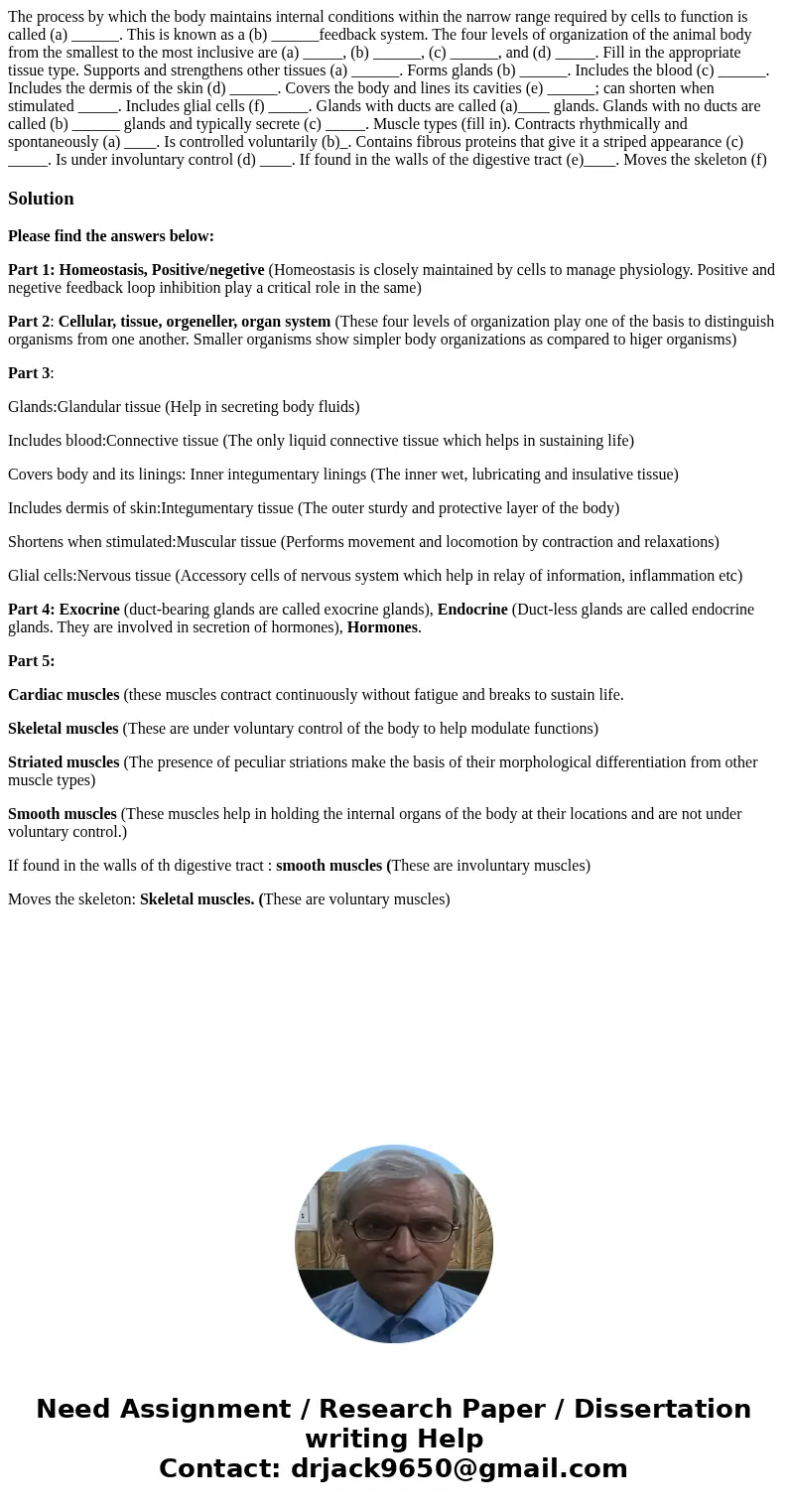The process by which the body maintains internal conditions
Solution
Please find the answers below:
Part 1: Homeostasis, Positive/negetive (Homeostasis is closely maintained by cells to manage physiology. Positive and negetive feedback loop inhibition play a critical role in the same)
Part 2: Cellular, tissue, orgeneller, organ system (These four levels of organization play one of the basis to distinguish organisms from one another. Smaller organisms show simpler body organizations as compared to higer organisms)
Part 3:
Glands:Glandular tissue (Help in secreting body fluids)
Includes blood:Connective tissue (The only liquid connective tissue which helps in sustaining life)
Covers body and its linings: Inner integumentary linings (The inner wet, lubricating and insulative tissue)
Includes dermis of skin:Integumentary tissue (The outer sturdy and protective layer of the body)
Shortens when stimulated:Muscular tissue (Performs movement and locomotion by contraction and relaxations)
Glial cells:Nervous tissue (Accessory cells of nervous system which help in relay of information, inflammation etc)
Part 4: Exocrine (duct-bearing glands are called exocrine glands), Endocrine (Duct-less glands are called endocrine glands. They are involved in secretion of hormones), Hormones.
Part 5:
Cardiac muscles (these muscles contract continuously without fatigue and breaks to sustain life.
Skeletal muscles (These are under voluntary control of the body to help modulate functions)
Striated muscles (The presence of peculiar striations make the basis of their morphological differentiation from other muscle types)
Smooth muscles (These muscles help in holding the internal organs of the body at their locations and are not under voluntary control.)
If found in the walls of th digestive tract : smooth muscles (These are involuntary muscles)
Moves the skeleton: Skeletal muscles. (These are voluntary muscles)

 Homework Sourse
Homework Sourse